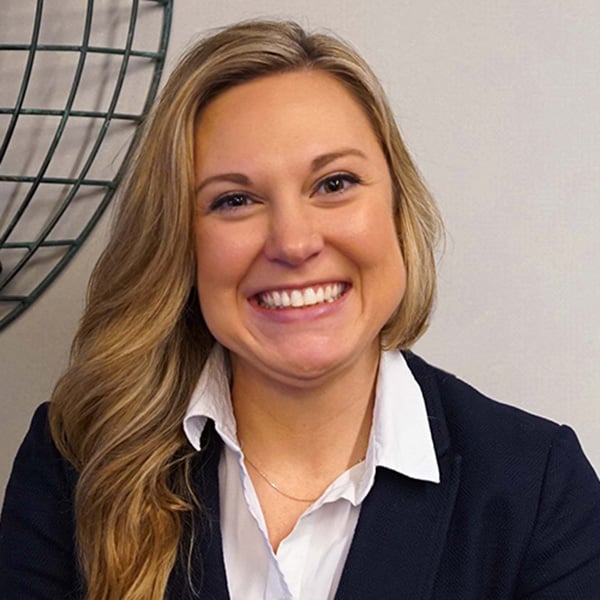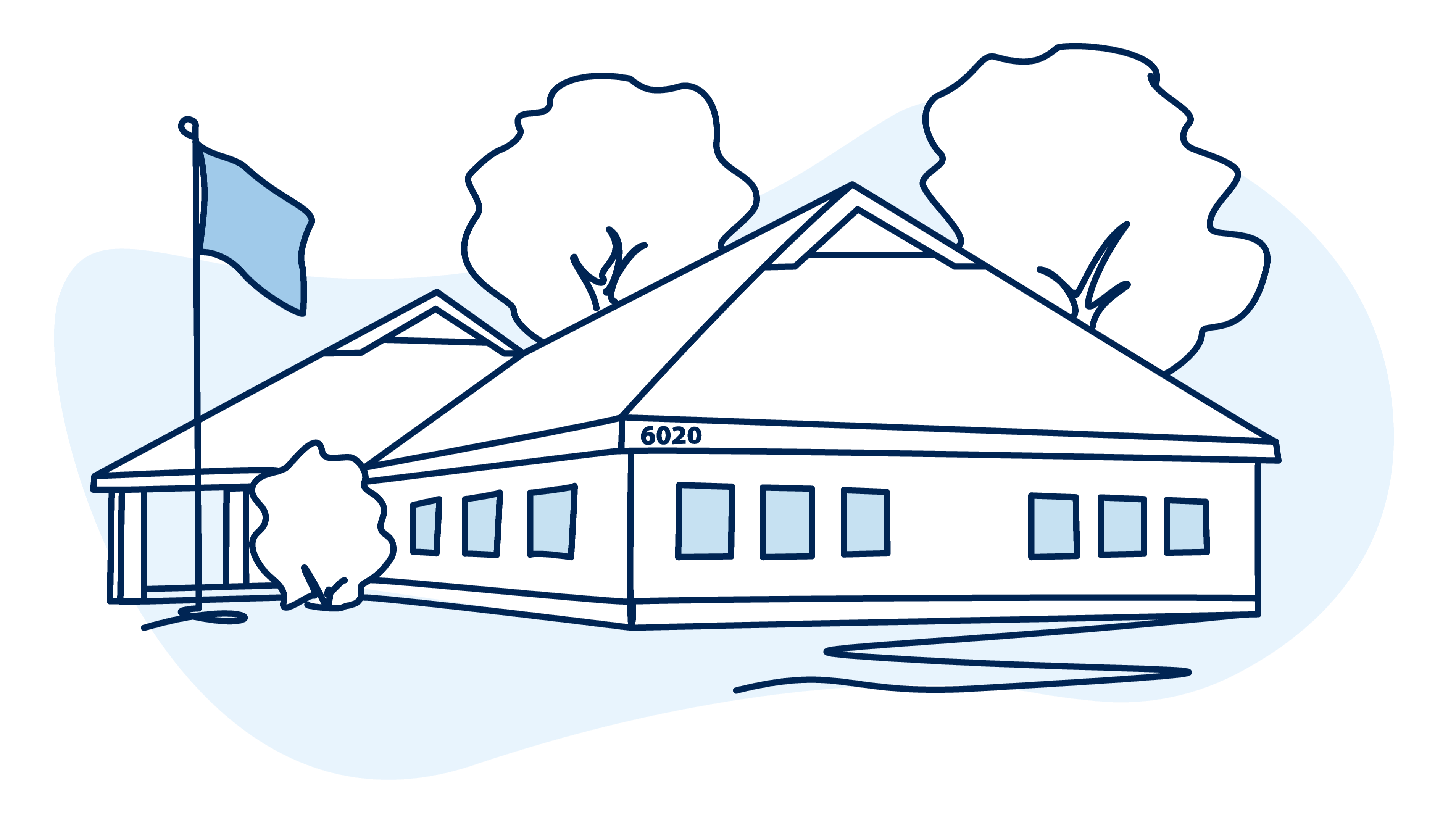14 LinkedIn Marketing Tips for Financial Advisors

With over 1.1 billion members worldwide as of 2025, LinkedIn isn't just another social network—it's the world's largest professional networking platform. We're talking about a platform where 40% of active users check the platform daily, creating consistent opportunities for meaningful engagement.
Building a LinkedIn strategy can seem like an overwhelming task, and at worst a time suck with little to no return. But many financial advisors like yourself are using LinkedIn successfully, and their daily routine is probably simpler than you think. The results speak for themselves. There are more than 234 million LinkedIn members in the U.S. alone - and it’s popular with high-income groups, as a Pew Research Study found that more than half of LinkedIn’s members’ households earn over $100,000/year. And let's talk numbers that matter: 42% of investors felt their advisor could add greater value simply by sharing content and communications personalized to their interests, financial goals, and life events.
Before you begin networking in LinkedIn, you need to address your virtual presence, branding, and voice. These crucial choices will inform how you approach each step as well as how you are perceived after you attempt to connect. The following are 14 ways to build a LinkedIn strategy that works.
1. Clean up your profile
The first step to building a credible presence on LinkedIn is probably the most crucial. Just having a profile isn’t enough. This is where you are discovered, and it needs to function like your resume. You are, after all, competing for jobs in the sense that a new client is like a new boss. Your profile should be impressive enough to establish your authority in financial planning, with details on any awards or achievements. Try to keep it clean and straight forward. Anyone looking at your profile doesn’t want to read a novel. They want to know why they should pick you. Make it easy by establishing your credibility and leaving any long-form information for content marketing purposes. We’ll get to that later.
Your profile page serves as evidence you are who you say you are. Make sure everything is accurate while highlighting areas where you shine. It's easy to bullet point work experience, and especially important to include things like daily duties, big wins, and links to projects. Not only will detailing your profile help make you more discoverable, but is also further establishes your credibility.
Pro tip: Don’t forget to link your profile to your website, blog, and other social channels. It reinforces your credibility. You should also consider claiming your LinkedIn URL - it looks more professional and helps with discoverability beyond just LinkedIn searches.
2. Get discovered – optimize your profile for search
Your profile needs to speak the same language as your ideal clients. Someone using LinkedIn to search for financial advisors in their area will use certain keywords and phrases based on their need. And they’re not always typing “financial advisor” - they’re searching for solutions to their problems. Think about what clients have come to you for in the past, and the vernacular they’ve used to describe your job. They haven’t all come looking for a financial advisor specifically, but rather to address certain pain points. Think 'wealth management', or 'retirement planning' or ‘estate planning’.
Your headline is prime real estate for keywords. This is where you give an overview of your professional self as well as the services you provide. Use broad, general keywords, but adjust and vary those words to show areas of expertise and how you can help. This is one of the first places a client will look when you reach out to connect, so don’t gloss over this. In the experience section, get granular. Specific details help you appear in more varied searches and differentiate you from the crowd.
3. List your skills
LinkedIn’s skills section is like SEO for professionals. Advisors who generate original content are more likely to be successful on LinkedIn, and skills help people find that content. Remember, you're positioning yourself as the expert.
LinkedIn will give you recommendations for skills based on others you’ve listed. If LinkedIn is providing the skill, and it’s something you do, you should absolutely include it. LinkedIn isn't recommending those skills based on nothing. Those are the skills your competitors are using and what people are searching for when looking for financial advisors. Pay attention and include them on your profile, but don’t lie about skills. Only include them if you actually have that skill.
4. Connect with other experts
This is the fun part. Start connecting! You’re probably already connected to the people you know, and hopefully to your clients. You should also connect with other advisors you’ve met along the way, whether at a conference or a past job. Re-establishing connections with other colleagues you respect is a great way to build your network.
You should also attempt connecting with other experts in the financial industry that you respect and admire. A great way to figure out how to brand yourself online is to research what other people are doing. What do you like? What don’t you like? You’ll gain a lot of insight and avoid making stupid mistakes by being a witness to what works.
5. Take 10 minutes to network every day
Once you’ve established your presence and have a solid network, take ten minutes each day to build upon that work. Here’s an easy routine you can follow:
- Share others' content: Pick 1-3 posts that resonate with you and share them with your own commentary. A sentence or two about why you're sharing keeps you active without requiring original content creation. Sharing is a great way to endorse other thought leaders while keeping yourself in the feed.
- Follow 1 new “influencer”: When we say LinkedIn Influencer, think industry veterans or respected voices in our industry. LinkedIn will often recommend followers based on who you already follow. You can take cues from other thought leaders by simply following them and seeing what they’re up to. They often share content that you can send down your funnel later.
- Check your feed: See what your connections are discussing and what’s trending. This is a good way to see what your competitors are up to. Get new ideas for content this way. You may have a unique perspective on a topical or popular issue.
- Like and comment: While checking your feed, provide a few comments and like a few posts. Engaging with others makes them more likely to engage with you. Choose new people to engage with each day and avoid liking and interacting with the same few people every day.
6. Keep up with Profile Analytics
LinkedIn tells you who's viewing your profile and what searches you're appearing in. These notifications are like having a lead detector - someone spending time reviewing your profile is already interested. As you’re building relationships online, anyone may take a moment to view your profile, and if they’ve spent time reviewing who you are it may be someone you’d like to connect with, or even someone you’ve been hoping to connect with. These contacts are warm leads waiting to be cultivated. A simple, personalized connection request can turn a profile view into a conversation.
Check your analytics by clicking "Me" at the top of your homepage, viewing your profile, and scrolling to the "Analytics" section.
7. Seek engagement - include questions and CTAs in posts
Encourage others to interact with you by asking questions in the content you post, or by ending posts with a strong call to action (CTA). Before you post, ask yourself “Does this content relate to my current and prospective clients?” If it doesn’t, you’re shouting into the void. When building relationships, showing people you care about what they say or asking them to join you in a mission is a great way to encourage discussion.
Participation on LinkedIn is necessary, and even if only one person engages with your content, you’ve just inspired one person. Take the time to nurture that single lead, and before you know it others will join in.
8. Share timely insights
When topics are trending, share your perspective. Creating a presence by liking, commenting, and sharing is important and shows you’re actively engaged in conversations, but it doesn’t say anything about you personally, and it doesn’t earn you any credibility points. To establish thought leadership, you must stay relevant on topics in the financial industry and share your insights. In other words, to be a thought leader, you must have a unique perspective to share. Without it, conversations never start.
Whether you comment on posts or create long-form content, your insights should offer something fresh. If you have a blog, share teasers with links back to your site. No blog? Use LinkedIn's blog publishing feature to create content directly on the platform. If you want to drive traffic from LinkedIn to your site, having a blog is a great way to achieve this goal. You can also publish parts of your piece to LinkedIn, with a CTA to “read more” that clicks out to your blog.
9. Visual interaction is key - use live video
Once you've established credibility, live Q&A sessions can deepen relationships with your audience. Don't worry about giving away free advice - transparency builds trust faster than gatekeeping ever will.
High-value clients understand that engaging a professional is easier than doing the work yourself, especially when they value their time as much as their money. They’ll pursue you if they like what you’re saying, especially if you’ve offered a fresh perspective.
10. Cross-promote with other thought leaders
Networking has its obvious benefits. Building relationships with other leaders or influencers in your industry not only helps you improve your own skills but can help build your audience. If you regularly interact with other respected advisors, consider creating content together. Interviews are an easy starting point. And there are plenty of online tools that allow you to record side-by-side with ability to easily edit and clip for shorts or reels content.
After the content is created, you both share with your respective audiences. Promoting content this way helps deliver potential leads and builds your network by connecting with someone else’s audience.
11. Personalize your outreach
Making connections is only the first hurdle. As you nurture cold leads, what you’re really doing is building a relationship. Building relationships virtually can seem disingenuous at times, especially if what you’re sending seems automated. There are plenty of services that can automate outreach for you, so you can focus on building relationships. LinkedIn is not the place for automation.
This platform gives you a unique opportunity to really provide individualized attention, which can transform into a strong connection or lead. Take time to see what your lead is doing on LinkedIn. What kind of posts do they share, and where are they spending time? Take interest in their interests and use that to personalize your efforts. By showing you understand them and their goals, they’re more likely to accept an invitation to meet in person.
12. Showcase yourself as the expert
Your profile defines who you are; your content and engagement build your brand. Make sure these align perfectly. If you've carved out a niche serving business owners, don't suddenly start posting content for software engineers—you'll confuse your core audience.
The most successful financial advisors on LinkedIn have a focuses niche, and their content strategy reflects that specialization. We have another blog that gets into more detail on how to find your niche market, but for starters here’s a few areas to consider:
- Industry-specfiic niches: Think healthcare professionals or tech executives
- Life-stage niche: Focus on pre-retirees (ages 50-65) or new parents planning for college funds
- Geographic niches: Local and regional focus with insights on state-specific tax laws or regional economic developments
Whatever niche you choose, commit to it completely in your LinkedIn strategy. Use industry-specific terminology your target audience uses. Share articles from publications they read. Comment on posts from their professional associations. Join LinkedIn groups where they gather. When someone in your niche sees your content, they should immediately think, "This person gets my world".
Consistency doesn’t mean recycling content. It means maintaining a coherent voice and perspective across all your interactions while serving your chosen audience’s specific needs. This is where the first touchpoints of this piece really come into play. When someone makes an appointment to meet you in person, the person they meet better be consistent with the one you’ve put out there on LinkedIn. There’s a lot of value in being yourself. People can tell when you’re being genuine, and that may be all you need to build your brand.
13. Create a company page
Say you’ve built a consistent image on LinkedIn, you’ve promoted insightful, original content that’s attracted cold leads into your circle, and you’ve converted some of those leads into clients. A great way to scale your efforts include creating a company page. Following suit with how you set up your personal profile, you can use this page to connect with your employee’s connections or simply to lend yourself a little extra credibility.
A company page gives you further agency over how you present your brand to the internet, and you can optimize this page just like you did with your profile to become more discoverable. When it comes to brand awareness and thought leadership, there’s a lot of value in connecting your personal profile to your business profile. There are two ways to be discovered, and two places to demonstrate your value in the financial industry.
14. Extend your reach with sponsored content
You need a company page to run LinkedIn ads, but the investment can be worthwhile. LinkedIn's advertising revenue is projected to reach approximately significant levels in 2025, indicating strong advertiser confidence in the platform.
Start with defining a goal like whether you’re running a campaign for brand awareness, lead generation, or promoting a service or event. Use that goal to form a strategy for your campaign. For instance, if you’re running a campaign for brand awareness, try promoting high value content that’s gotten a bit of attention from your current connections. Invite engagement by asking questions or having a strong call to action.
There’s a lot that goes into LinkedIn sponsored content, but to keep it top level make sure you use clear, high-quality images or videos, keep SEO in mind when developing headlines and descriptions, and remain consistent with your brand. Identify the audience you want to target, either by location, vocation, pain points, or even just content they might like. Narrowing down who you target in a campaign can really help your campaign perform to the best of its abilities. It also allows for A/B testing creative, or testing creative against different audiences to see what performs best with whom. To make the most of sponsored content, it needs to be a supplement to the organic content you’re already producing. Again, consistency is key. If you’re offering something more in-depth than a regular post, or more high value than some free advice, you’re already on the right path for success.
Bottom Line
LinkedIn success for financial advisors isn’t all about outsmarting algorithms or posting every day—it’s about showing up consistently, providing value, and building genuine relationships.
The advisors winning on LinkedIn today are the ones who understand that social media success is simple good relationship building, scaled. Focus on being helpful, authentic, and consistent. The leads will follow.
Author Info

Allison Warner is the Corporate Marketing Director at USA Financial, where she leads the development and implementation of corporate...
Related Posts

Is Your Brand Working for You?
In today's competitive landscape, your advisory firm is more than just a name. It's your promise, your reputation. But how do you know if your brand is working for you, attracting the right clients, and communicating your value effectively? The answer lies in a brand audit.
.png)
SEO Basics for Financial Advisors: A Practical Guide
You've built a solid financial advisory practice, but potential clients can't find you online. Many advisors struggle with this exact challenge and feel overwhelmed by the technical jargon and conflicting advice surrounding search engine optimization (SEO).

4 Ways to Find Your Niche Market as a Financial Advisor
Niche marketing has many benefits for financial advisors: clients have a good reason to refer you, prospects can see themselves represented on your marketing collateral, and you get to optimize your knowledge of retirement or financial planning for that group. Don’t underestimate the strength it brings to be able to say that you've helped several clients in a similar situation or from a common source as the prospect you’re trying to close.

Is Your Brand Working for You?
In today's competitive landscape, your advisory firm is more than just a name. It's your promise, your reputation. But how do you know if your brand is working for you, attracting the right clients, and communicating your value effectively? The answer lies in a brand audit.
.png)
SEO Basics for Financial Advisors: A Practical Guide
You've built a solid financial advisory practice, but potential clients can't find you online. Many advisors struggle with this exact challenge and feel overwhelmed by the technical jargon and conflicting advice surrounding search engine optimization (SEO).

4 Ways to Find Your Niche Market as a Financial Advisor
Niche marketing has many benefits for financial advisors: clients have a good reason to refer you, prospects can see themselves represented on your marketing collateral, and you get to optimize your knowledge of retirement or financial planning for that group. Don’t underestimate the strength it brings to be able to say that you've helped several clients in a similar situation or from a common source as the prospect you’re trying to close.

